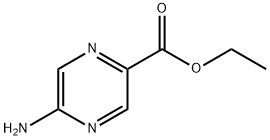When exploring how to dispose of acetone based on its chemical properties, questions arise. Given acetone's high volatility, how does it influence disposal methods? Does its solubility in water affect the way we handle it? And in industrial or laboratory settings, how should we adjust disposal according to its chemical reactivity?
How to Dispose of Acetone? Insights from Its Chemical Properties
Related Products More >
-
- 96-26-4
- CNY Request For Quotation
-
- 96-26-4
- CNY Request For Quotation
-
- CNY Request For Quotation
-
- CNY Request For Quotation
-
- 67-64-1
- CNY 2000.0000
- 1ton
-
- 51364-51-3
- Request For Quotation
- 100g
-
- 51364-51-3
- Request For Quotation
- 10g
-
- 51364-51-3
- Request For Quotation
- 1kg



 沪ICP备2021018848号-5
沪ICP备2021018848号-5

Now, what about its solubility in water? Acetone mixes really well with water, which might make you think it’s okay to pour it down the drain. But hold up—just because it dissolves doesn’t mean it’s safe. Acetone can contaminate water sources and harm aquatic life, so it’s not a good idea to flush it away. Instead, you should collect it in a proper waste container and dispose of it as hazardous waste. Many places have specific facilities or collection days for chemicals like acetone, so check with your local waste management authority.
In industrial or lab settings, disposal gets even more specific because of acetone’s reactivity. Acetone can react with certain chemicals, like strong oxidizers, and create dangerous situations. So, in these environments, you need to be extra careful. Labs usually have designated waste containers for solvents like acetone, and they’ll often mix it with other compatible waste solvents before sending it off for proper disposal. Industries might have on-site treatment systems to neutralize or recycle acetone, reducing the environmental impact.
So, to sum it up, acetone’s volatility, solubility, and reactivity all play a role in how you should dispose of it. Keep it sealed to prevent evaporation, avoid pouring it down the drain, and follow proper hazardous waste protocols. Whether you’re at home, in a lab, or working in an industrial setting, handling acetone responsibly is key to keeping everyone—and the environment—safe.
In industrial settings, though, things are a bit different. They usually have large quantities of acetone. Due to its volatility, they might use a process called distillation for disposal. In distillation, they heat the acetone - containing mixture. The acetone, being volatile, will turn into vapor first. Then they can collect and condense this vapor, separating the acetone from other substances. This way, they can either recycle the acetone or dispose of it in a more controlled manner.
Now, let's think about acetone's solubility in water. Acetone is actually soluble in water, but this solubility can make disposal a bit tricky too. In a laboratory, if you have a solution of acetone and water that you need to get rid of, you can't just dump it into the regular waste. You have to consider the environmental impact. One option could be to use a separation technique. For example, you might use a solvent extraction method. You add another solvent that's immiscible with water but can dissolve acetone better. Then, through separation funnels or other separation equipment, you can separate the acetone - rich solvent from the water. After that, you can further process the acetone - rich solvent for proper disposal.
In industrial scenarios, if acetone is present in wastewater, they often use biological treatment processes. But they have to be careful because acetone can affect the bacteria in the treatment plants. Sometimes, they might need to dilute the wastewater first to reduce the concentration of acetone to a level that the bacteria can handle. This is because high concentrations of acetone can be toxic to the microorganisms involved in breaking down other pollutants in the water.
Finally, let's consider acetone's chemical reactivity. Acetone can react with certain substances, especially strong oxidizing agents. So, when disposing of it, we need to make sure it doesn't come into contact with such chemicals. In a laboratory, if you have acetone waste, you should store it in a container that's made of a material that won't react with it. And you should label it clearly as acetone waste. In industrial settings, they have strict safety protocols. They might neutralize any reactive impurities in the acetone waste before disposal. For example, if there are acidic or basic contaminants in the acetone, they'll use appropriate chemicals to neutralize them. This way, they can reduce the risk of dangerous reactions during disposal. So, as you can see, acetone's chemical properties really play a big role in how we should dispose of it in different settings.
Its solubility in water is another factor we have to consider. Acetone mixes well with water, which means it could easily spread through water systems if not properly contained. So, we can't just dump it into a lake or river thinking it'll dilute and disappear. We need to make sure it's properly contained and treated before it comes into contact with any water sources.
In industrial or laboratory settings, we've got to be extra careful because of acetone's chemical reactivity. It can react with certain materials, sometimes even explosively, so we need to store and dispose of it in compatible containers. We might need to use special ventilation systems to keep the vapors under control and make sure it doesn't come into contact with any incompatible substances.
Overall, disposing of acetone requires a thoughtful approach that takes into account its volatility, solubility, and reactivity. We've got to handle it with care to ensure it doesn't cause any harm to people or the environment. It's all about understanding its properties and acting accordingly to keep everyone safe.